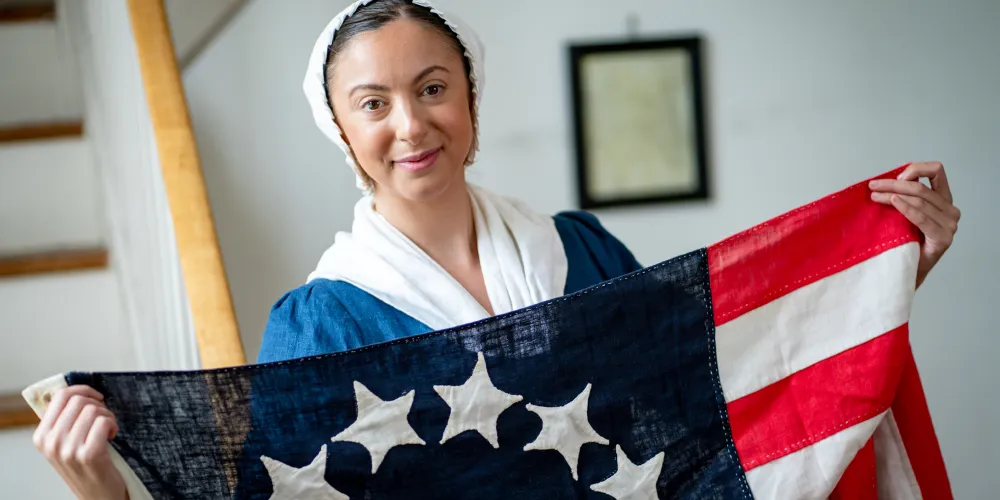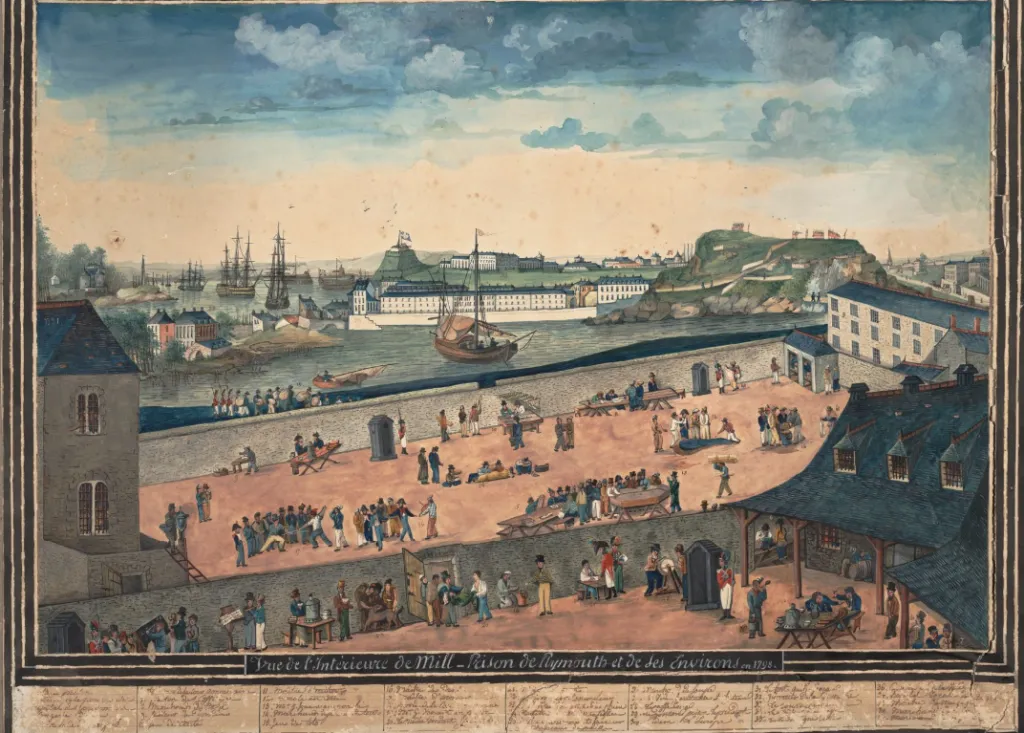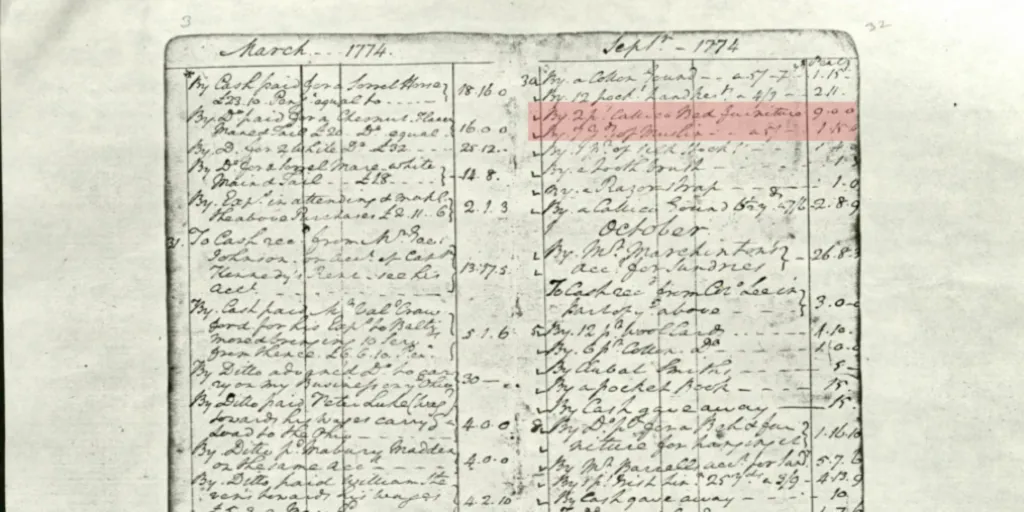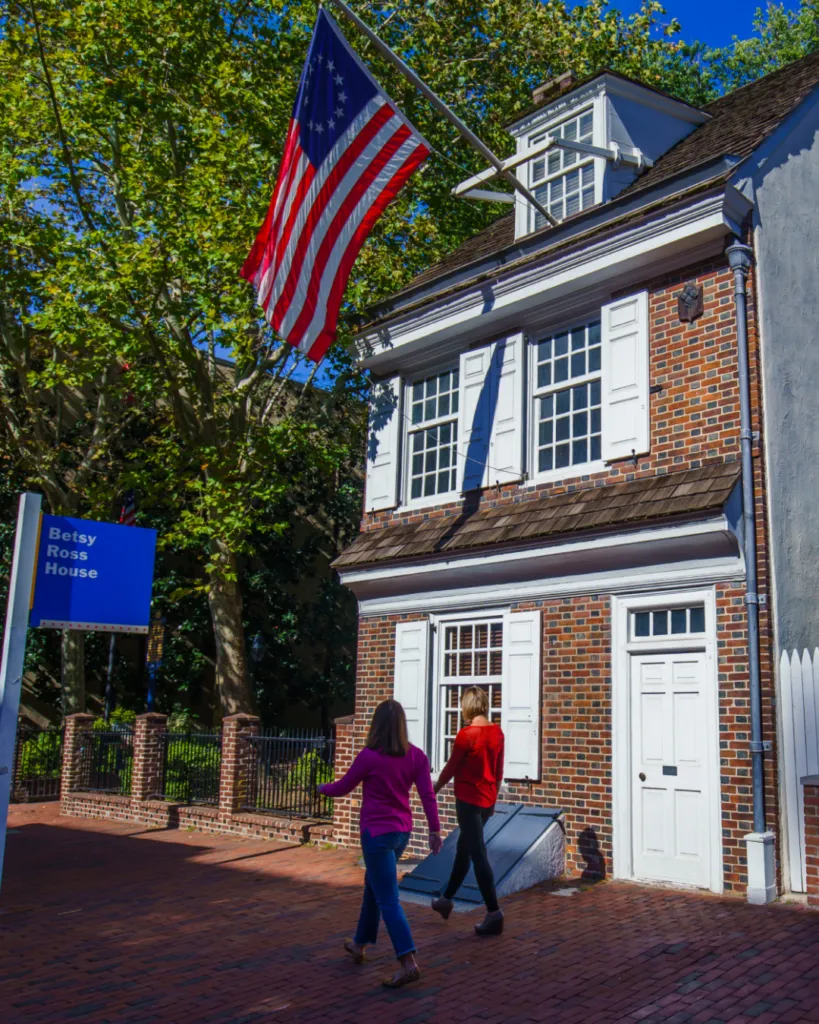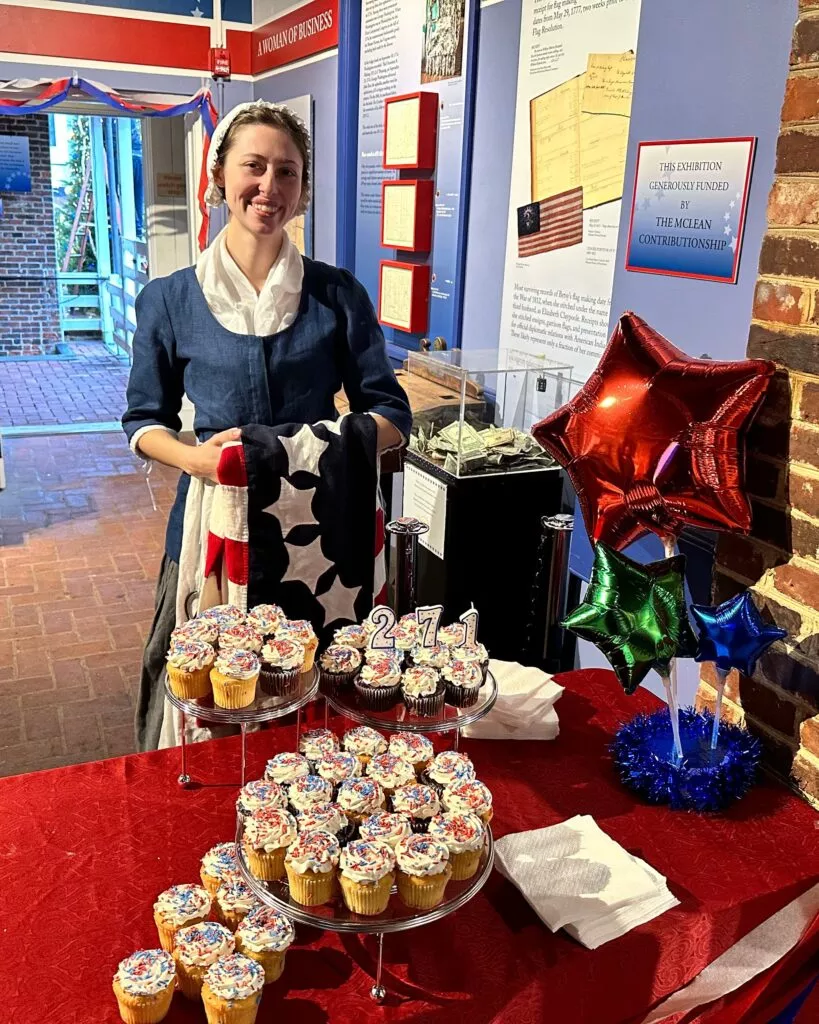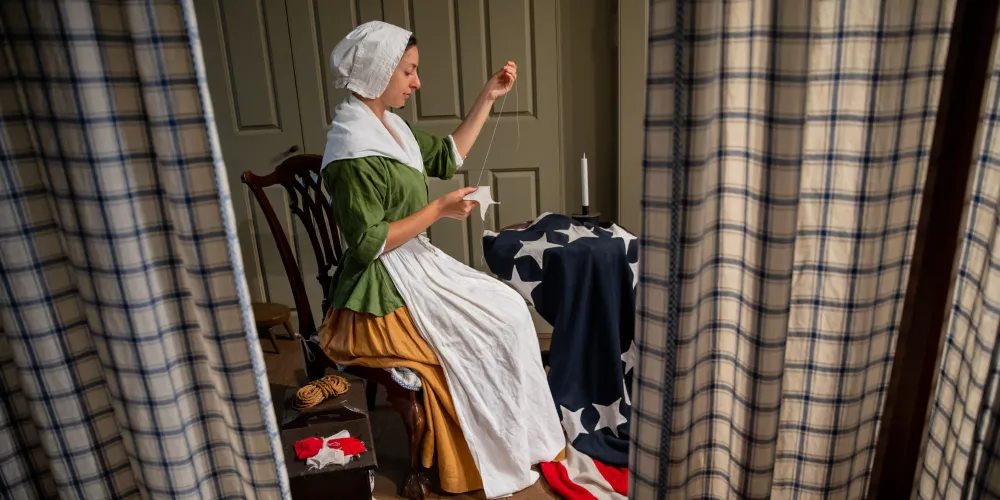Life at Old Mill
John Claypoole was a part of the Continental Army from 1777-1778 and became a privateer the following year aboard the Luzerne as the ship’s steward. The Luzerne was sailing near Ireland in the spring of 1781 when it was captured, and Claypoole was sent to Old Mill. When Claypoole arrived at the prison, he entered an 8’ tall iron gate surrounded by two sets of 14-20′ high stone walls topped with broken glass. The main yard was 250’ x 158’ with a single lamp post that also served as a whipping post. Prisoners slept ina windowless hall. Daily rations included 1 lb bread, ¼ lb beef, 1 lb greens, and a quart of beer, although these rations were not always consistent. Americans were also given half rations because they were considered traitors or pirates from an internal rebellion rather than POWs from an established sovereignty.
What is a Privateer?
A privateer was a private, typically merchant, vessel with government sanction to intimidate, board, and loot enemy ships for profit. The actions of privateers were comparable to piracy and British vessels that captured privateers treated them as such. American privateers caused an estimated $18,000,000 in damages to British supply lines during the War.
Victory and Defeat
In October of 1781, General Cornwallis surrendered at Yorktown to French and American forces, effectively ending hostilities of the American Revolution. When news reached Old Mill, Ashburn and other POWs celebrated by creating an ad hoc American Flag in the prison yard. Unfortunately for Ashburn, he did not live to enjoy the spoils of victory. He died in March 1782 from an unknown illness before he was released. At this time, Betsy was still unaware Joseph had even been captured. She did not find out until June when just their surname “——-Ashburn” was listed, along with other POWs at Old Mill, in the newspaper (pictured right).
“In the Night of the 3rd of March, Mr. Joseph Ashburn departed this life after an illness of about a week which he bore with amazing fortitude & resignation” – John Claypoole (Memo Book)
- Want to learn more? Visit the Betsy Ross House through the end of May 2025 to see the special exhibit in person and ask Betsy questions!
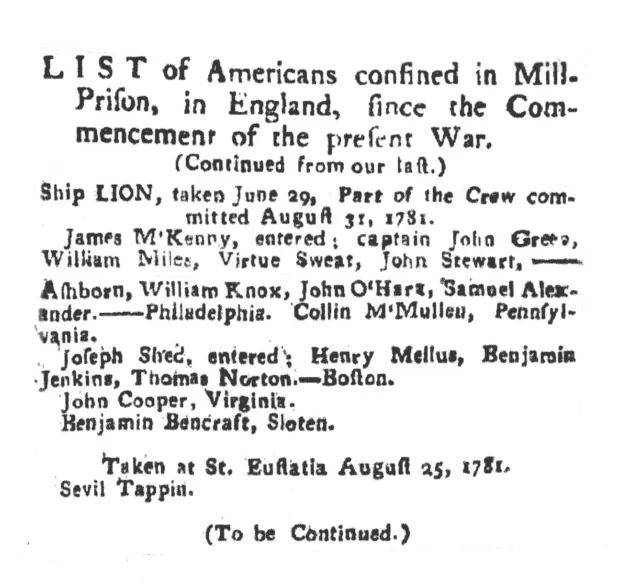
Elizabeth Claypoole
Betsy finally learned of Joseph’s demise in August 1782 from fellow POW John Claypoole. Claypoole returned to Philadelphia after he was released from Old Mill and quickly found Betsy to tell her the news about Joseph. Through bittersweet serendipity, Betsy and John made a connection and were married the following May.

By 1810, John Claypoole developed a physical disability that required the use of a cane, likely as the result of a stroke. The cane was a gift from Isaac Silliman, husband of Betsy’s first daughter Eliza Ashburn. The cane head is carved in the shape of a dog’s head with a masonic symbol and “I.S. to J.C. 1811” etched into the top.
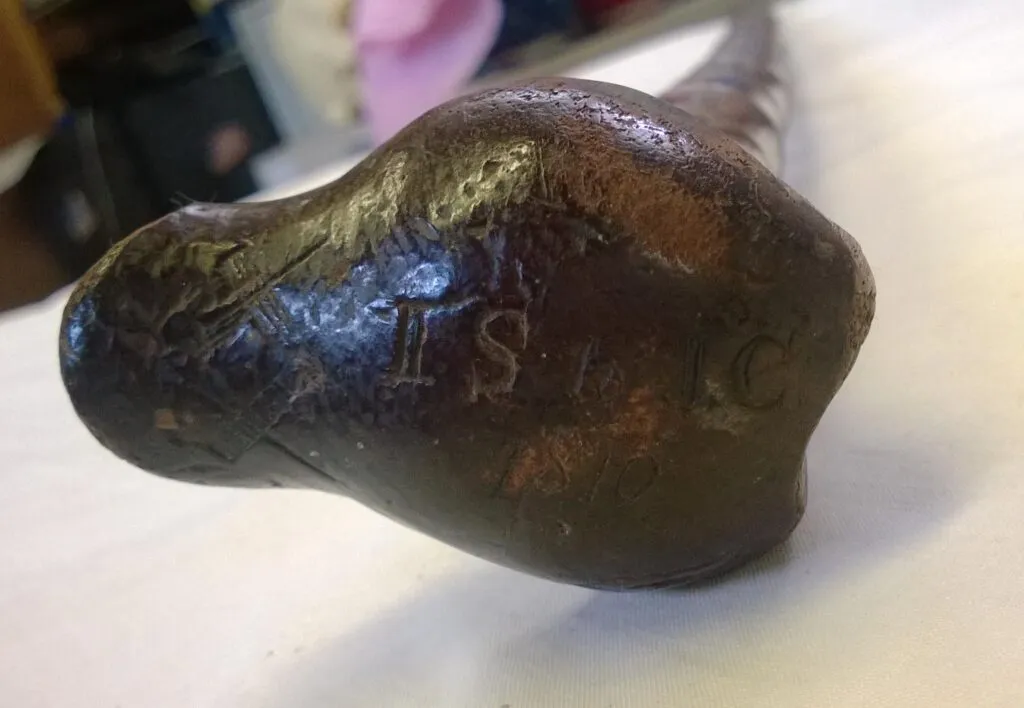
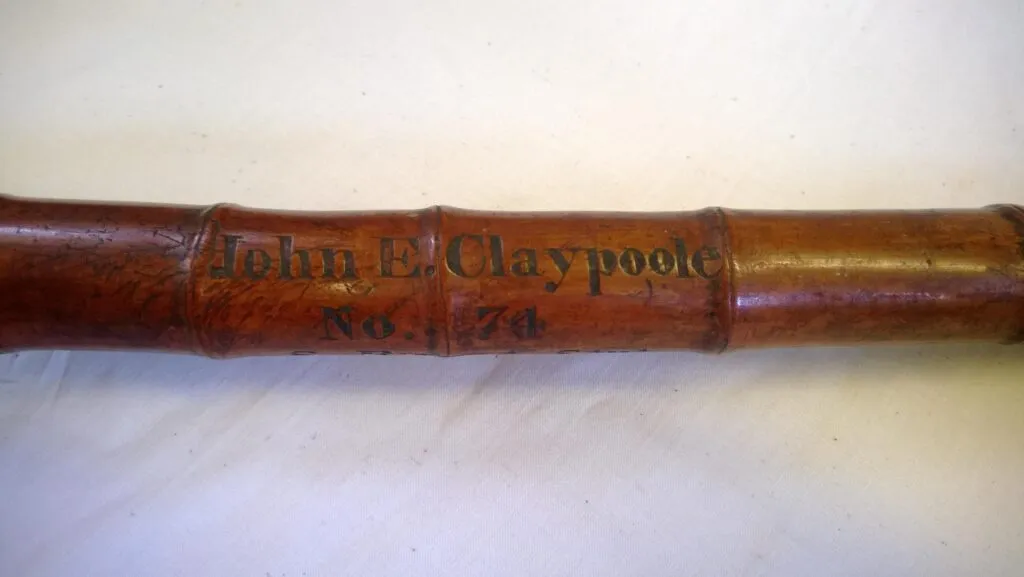
Related Stories
